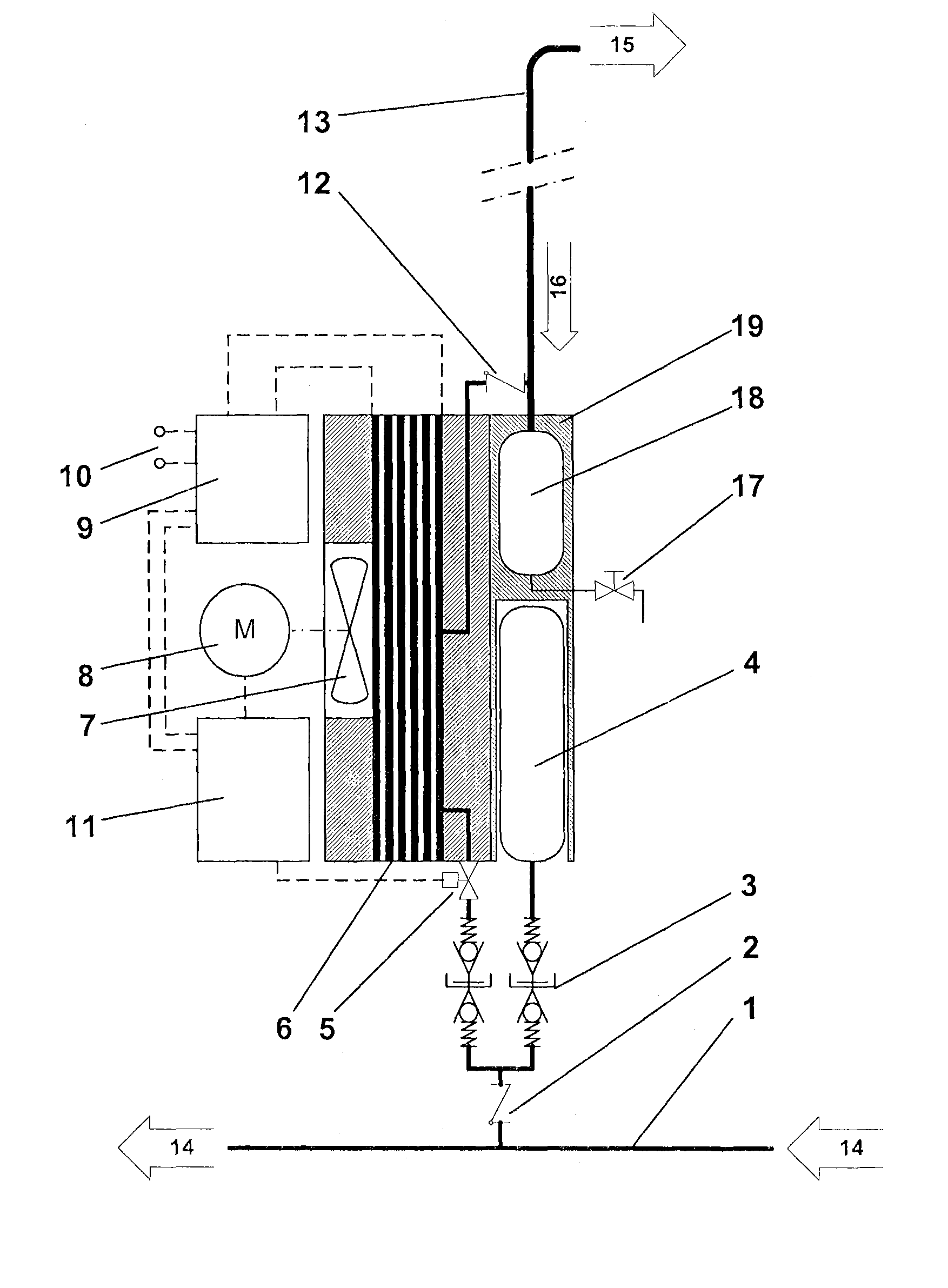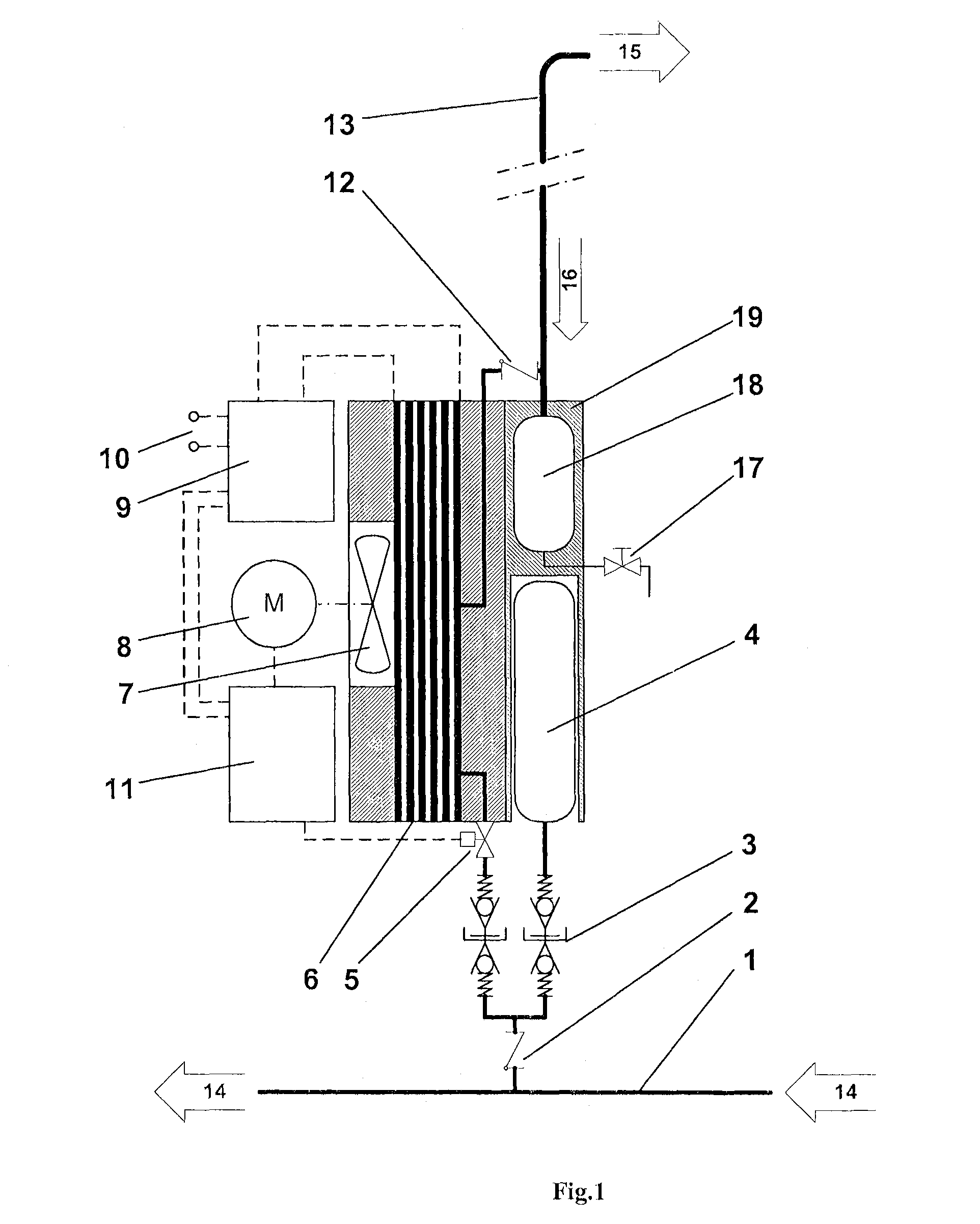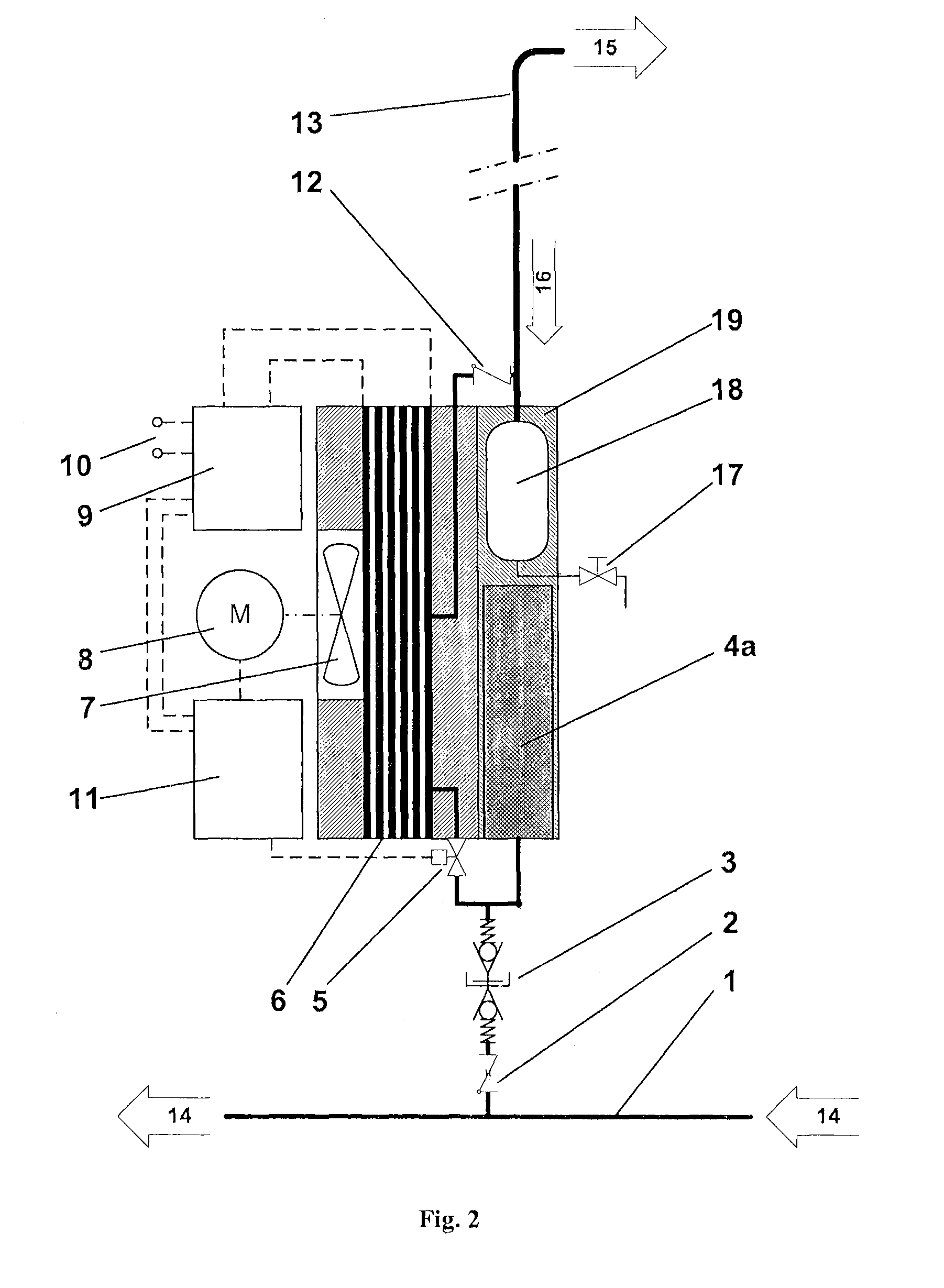Semi-autonomous central supply system for passenger seats
a central supply system and semi-autonomous technology, applied in the direction of cell components, electrochemical generators, cell component details, etc., can solve the problems of less efficient processing, achieve the effect of preventing the risk of oxyhydrogen gas reaction, facilitating rapid flow of hydrogen, and increasing safety on board the aircra
- Summary
- Abstract
- Description
- Claims
- Application Information
AI Technical Summary
Benefits of technology
Problems solved by technology
Method used
Image
Examples
Embodiment Construction
[0034]The example described and drawings rendered are illustrative and are not to be read as limiting the scope of the invention as it is defined by the appended claims. Identical or similar components in different figures are identified by the same reference symbols. The figures show schematic representations that are not drawn true-to-scale.
[0035]FIG. 1 shows an embodiment of the system for generating energy for a consumer element 20 in an aircraft. FIG. 1 shows a fuel cell element 6 and a rechargeable metal hydride storage cell 4. The rechargeable metal hydride storage cell 4 is designed for supplying the fuel cell element 6 with hydrogen. In this case, the rechargeable metal hydride storage cell 4 is designed in such a way that it can be charged with hydrogen.
[0036]FIG. 1 furthermore shows an embodiment of the system, in which the exchangeable metal hydride storage cell 4 and a collection container 18 are arranged in a separate component or carrier module 19. The carrier module ...
PUM
| Property | Measurement | Unit |
|---|---|---|
| energy | aaaaa | aaaaa |
| thermal energy | aaaaa | aaaaa |
| electric energy | aaaaa | aaaaa |
Abstract
Description
Claims
Application Information
 Login to View More
Login to View More - R&D
- Intellectual Property
- Life Sciences
- Materials
- Tech Scout
- Unparalleled Data Quality
- Higher Quality Content
- 60% Fewer Hallucinations
Browse by: Latest US Patents, China's latest patents, Technical Efficacy Thesaurus, Application Domain, Technology Topic, Popular Technical Reports.
© 2025 PatSnap. All rights reserved.Legal|Privacy policy|Modern Slavery Act Transparency Statement|Sitemap|About US| Contact US: help@patsnap.com



